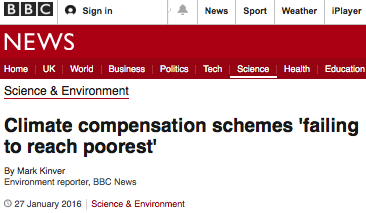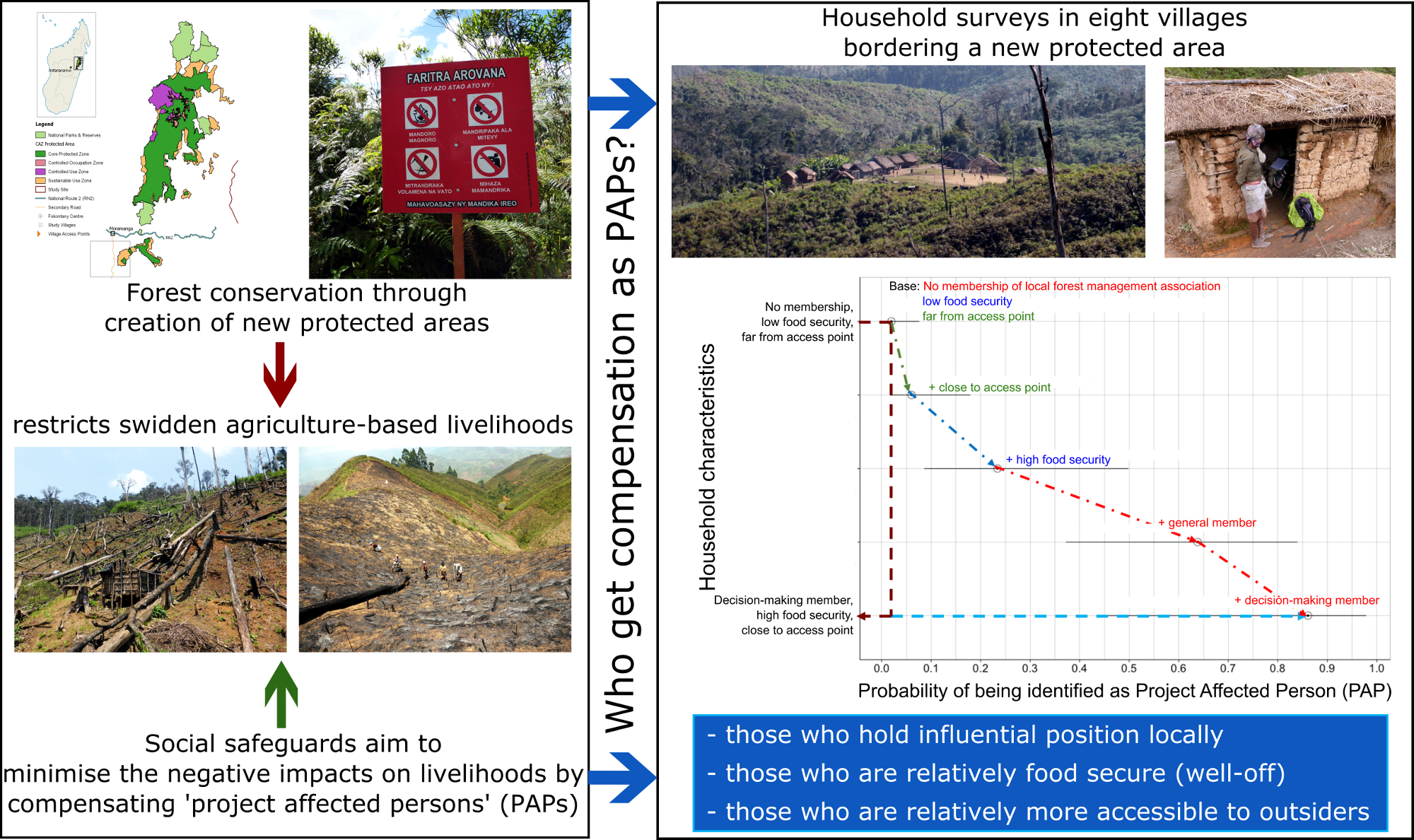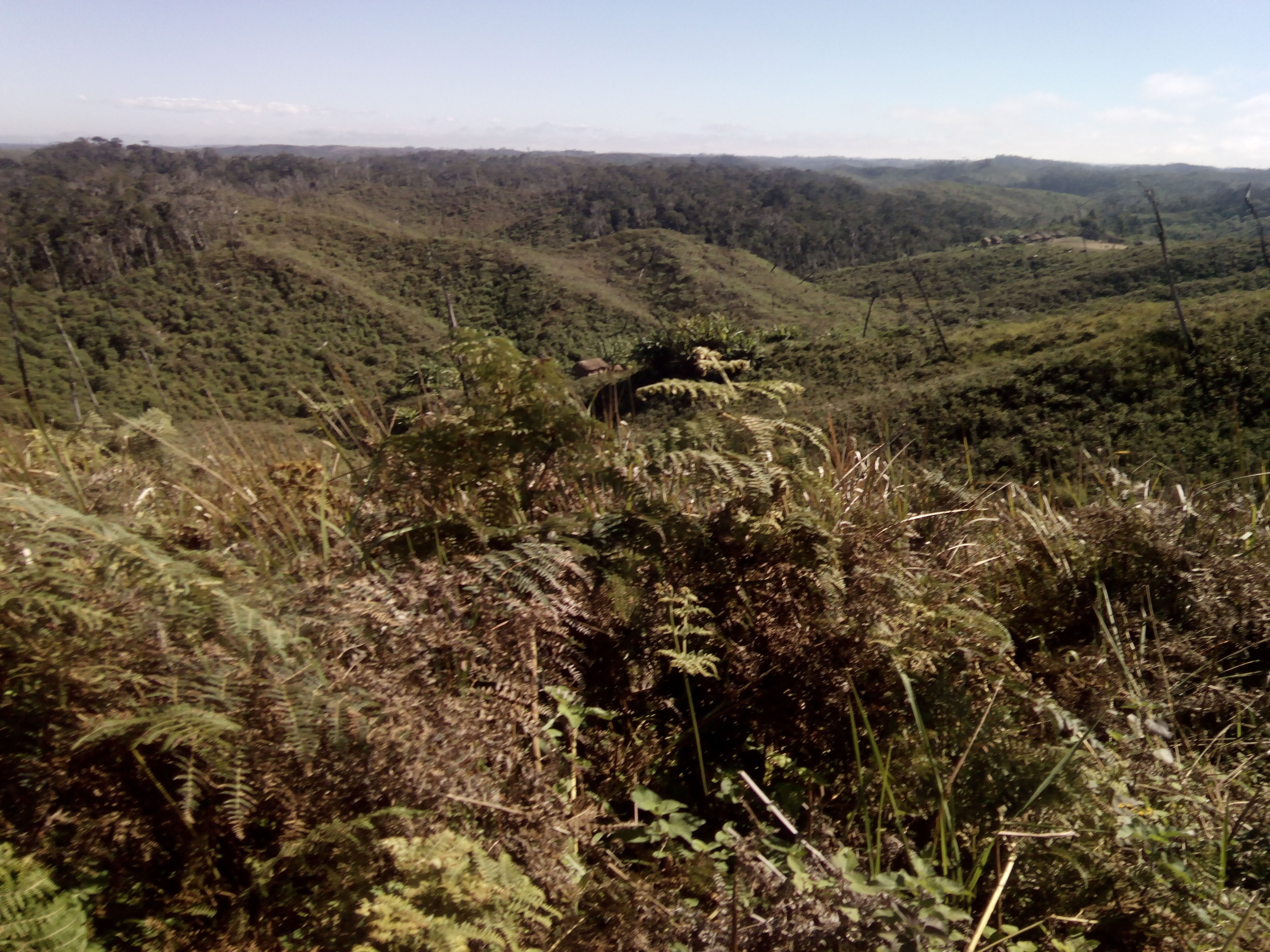BBC News wrote “Climate compensation schemes ‘failing to reach poorest’” covering our recently published paper from the p4ges project in which we analysed whether social safeguards that are meant to target the project affected persons (PAPs), often the poor and vulnerable groups in the community, actually succeed in doing so.

BBC Science & Environment covers the findings from our article on social safeguards in CAZ.
Using an in-depth case study of one of the recent social safeguards implementation carried out to compensate the potential negative impacts due to the creation of a new protected area (which also has a REDD+ pilot project) in the eastern rainforests of Madagascar, we show that the identification of the PAPs was severely flawed. We found that many of the households who should have been identified as PAPs were not identified; while local elites and those households easily accessible to the outside accessors had much higher probability of being identified as PAPs. Given that recent COP21 in Paris has endorsed REDD+ as one of the main instruments in mitigating climate change and with safeguards still a major contentious issue within REDD+, our study highlights major problems within the implementation of safeguards in poor developing countries that must be dealt with if programs like REDD+ are to benefit the ‘right’ people. The graphical abstract below attempts to visually summarise our study.

Can REDD+ social safeguards reach the ‘right’ people? Lessons from Madagascar: Graphical Abstract.
The paper is published in Global Environmental Change – an online version of the paper which is open access can be read/downloaded here.
Below, I provide a little background to the area where we conducted our fieldwork for this study
Ampahitra was no doubt one of the most difficult sites I have worked in; but it wasn’t the most difficult to get to when I compare it to some of our other study sites for the p4ges project. Hilly terrain with widely scattered households and hamlets that were very hard to reach – with some isolated households taking 4-5 hours of walk from the nearest hamlet – made it a difficult place to survey.

Conducting household surveys in the hilly terrian is not easy, especially when the households are too far apart.
However, physically this site is not very far from a major town. You could even see the town’s nightglow from most of the hilltops in the area. In fact you could reach even the remotest part of this site within a day from the capital Antananarivo, unlike some of our other sites that took days of travel. Despite this physical proximity to urban centres, this site had some of the poorest households we encountered, and most of these almost totally dependent on tavy (swidden agriculture). Many households had moved in from other nearby communities in search of land to start fresh tavy. This is why deforestation is rife in the area, and we found a lot of recent forest clearance during our fieldwork.
To say that these communities lacked basic essential services would be a huge understatement – these communities were totally neglected when it comes to basic services such as road/access, healthcare, education (no proper primary schools), not to mention electricity or telephone (not even mobile signal for the most part) despite being so close to a major town. More importantly, only three of the six villages we worked in were on the official map – just two correctly labelled, and there was no data on the households or population in these villages. Given this context, it wasn’t surprising that we spent more than a third of our fieldwork (over 50 mandays) trying to locate the households in the area.
In some ways, it is also not surprising that the ‘consultants’ who carried out assessments to identify households eligible for social safeguards seem to have missed a lot given the spread of the people in a difficult landscape, and the relatively short timeframe that the social safeguards assessments were carried out within CAZ. However, “difficult place to work” should in no way be an excuse for not doing the work properly – in this case not identifying many of the poorest and most vulnerable households who are set to lose out from the creation of the new protected area. Many of the households we surveyed for our study did not even know that their community was part of the safeguards assessment, which leads us to ask how can these households seek redress when they aren’t even aware of their rights and that they were supposed to be part of the safeguards?
Effective implementation of REDD+ safeguards is likely to face similar challenges if lessons are not learned from past safeguarding experiences like the one studied. Ultimately, it will be the poorest and the most vulnerable groups in communities like the ones studied who are set to lose the most, both from the changing climate and the actions against climate change.